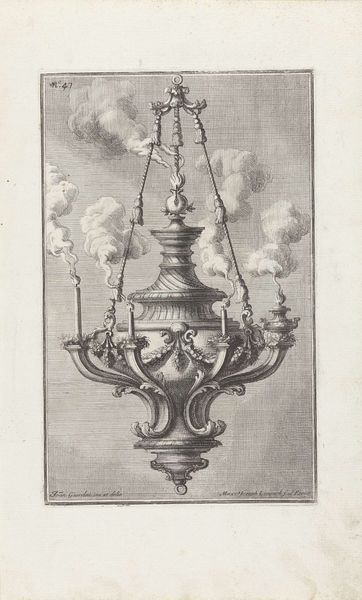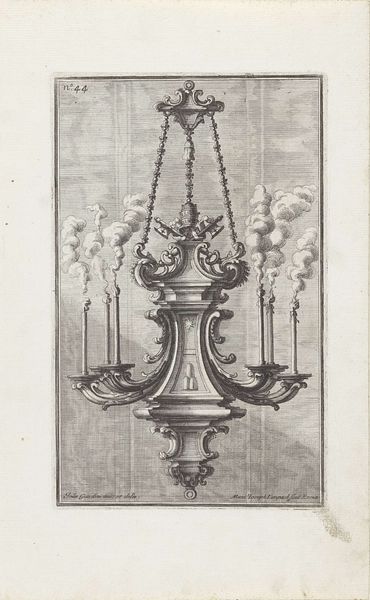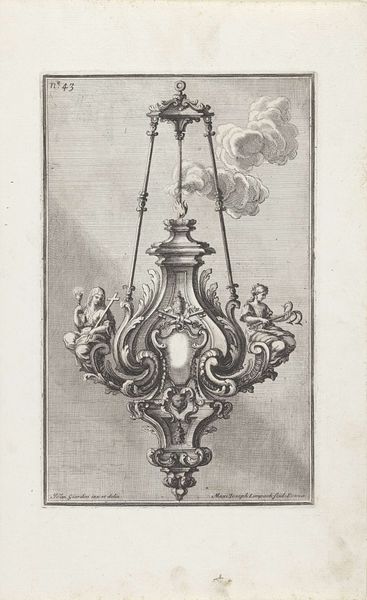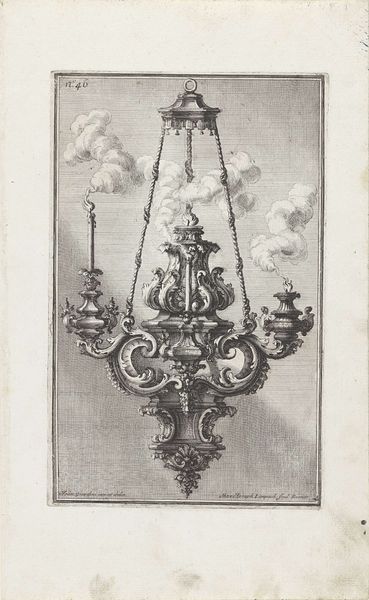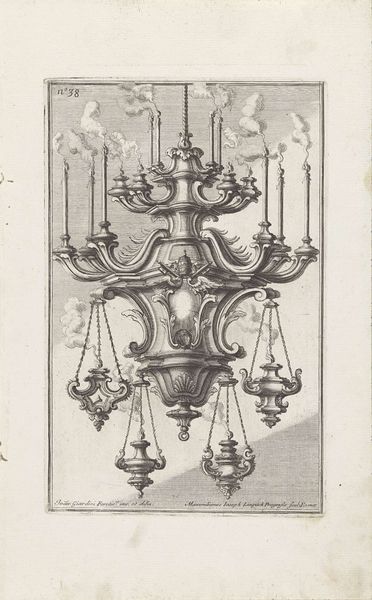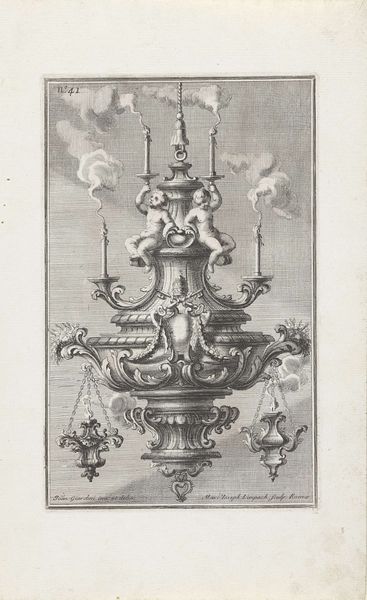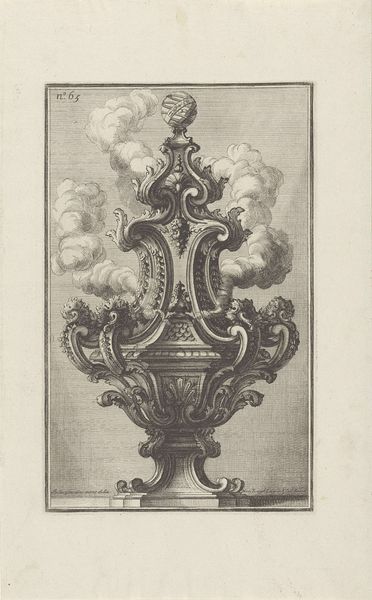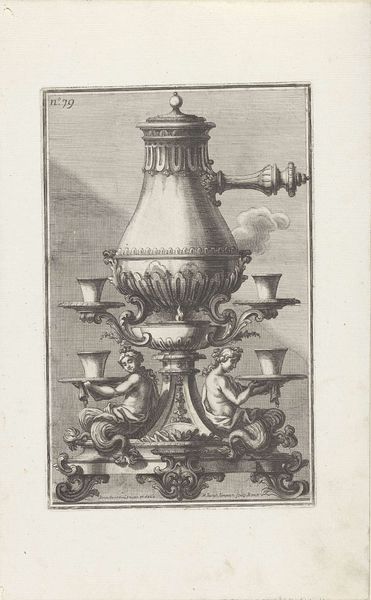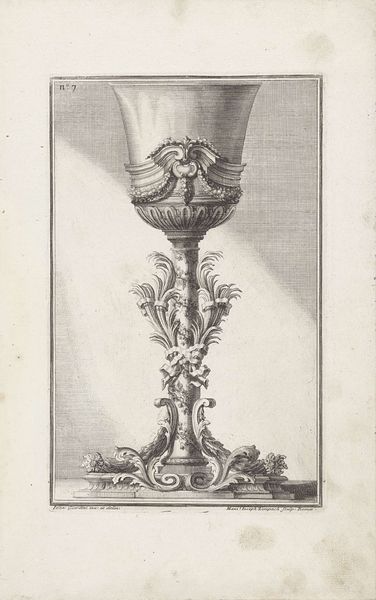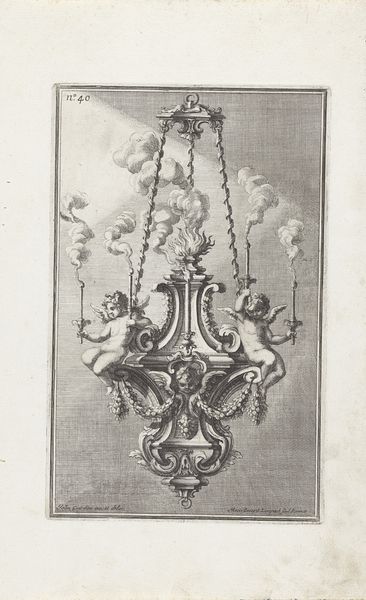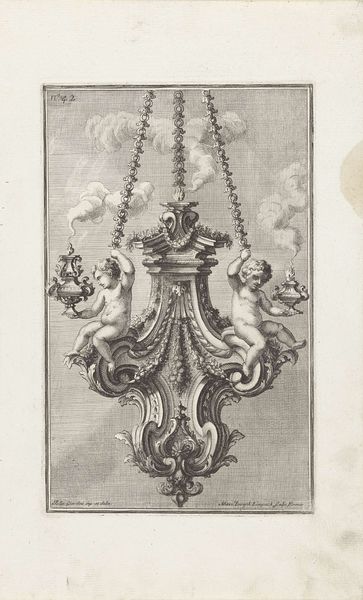
print, engraving
#
baroque
# print
#
form
#
line
#
decorative-art
#
engraving
Dimensions: height 275 mm, width 175 mm
Copyright: Rijks Museum: Open Domain
Curator: This is "Kroonluchter" or Chandelier, an engraving created around 1714 by Maximilian Joseph Limpach, currently held here at the Rijksmuseum. Editor: It has such a delicate feel for a chandelier, like a meticulously crafted dream. I'm drawn to the smoky tendrils rising from the candles; they give it a life of its own. Curator: Exactly! The medium lends itself well to exploring this period of decorative art, Baroque, characterized by elaborate and ornate forms. What I find compelling is the contrast between the object's inherent function, providing light, and the artistic labor involved in its meticulous depiction. Engravings were incredibly labor-intensive, reflecting the social hierarchies of patronage and production. Editor: That's a brilliant point. These objects were designed to impress, weren’t they? Think about the statement this chandelier makes, beyond illumination, about wealth and the ability to commission art. Consider also how that ostentatious wealth was acquired—tied to exploitation and inequality, defining power relationships within court circles. Curator: Precisely. And beyond wealth, we are seeing here form and the material of this decorative object interpreted through line, a translation into the print medium, showing a play between surface and volume. How the artist transforms something substantial into essentially line work. Editor: And that transformation, to me, reflects a society obsessed with appearance. It represents an elite class desperate to not only appear refined but also powerful—masking often brutal realities behind elaborate facades. The material production supports not just visual splendor but political theatre. Curator: The details invite a close look into its production, showcasing how printed images circulated design ideas during this period. We see a confluence of social ritual, craftsmanship, and the power of visual representation converging in something that transcends the domestic. Editor: Looking at this beautiful print, I can’t help but think about the ways that we use and produce these kinds of elaborate symbolic projections of status still today—we still adorn, we still project. Curator: Right. Thank you. By taking this look we understand that objects, materials and our labor is as powerful as the statements we project in visual art.
Comments
No comments
Be the first to comment and join the conversation on the ultimate creative platform.
